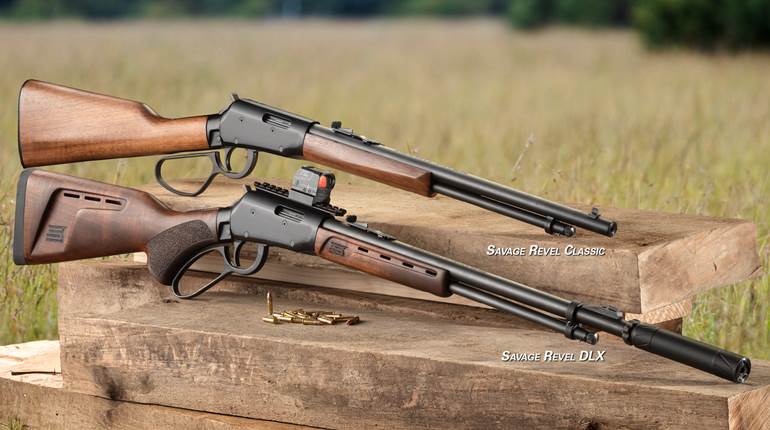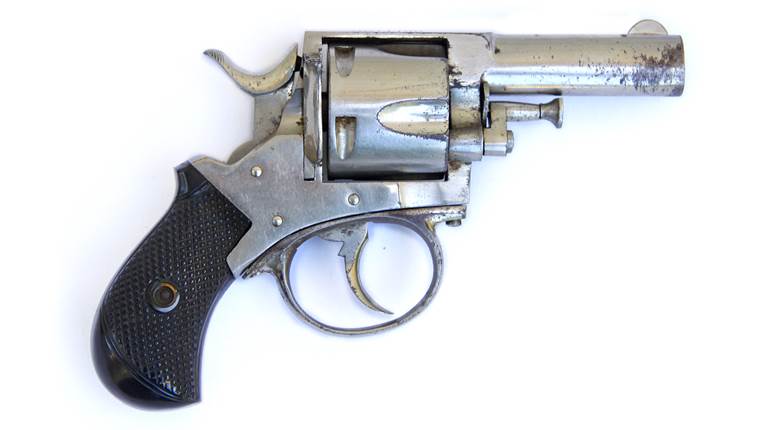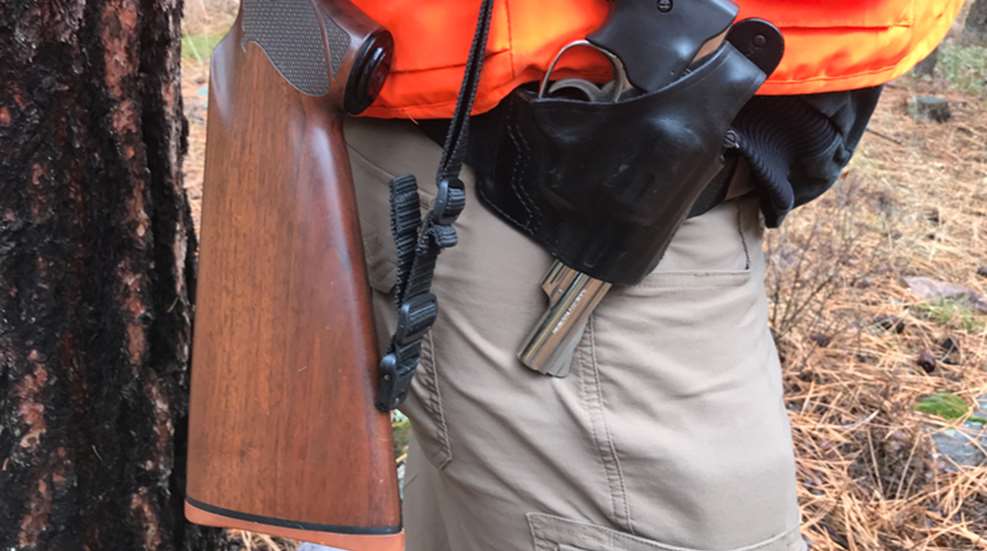
Is a handgun an essential piece of a big-game hunter’s kit or a couple pounds of redundant weight dragging down a hunter’s pants? 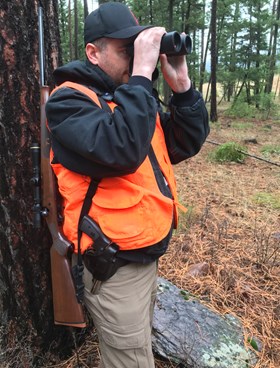
For years I carried a .41 Mag. revolver and a rifle while hunting deer and elk. When game appeared, though, my rifle did the shooting while the .41 remained holstered on my hip. The only time I fired my .41 was to blast grouse along the trail. The weight of that 2½-lb. handgun returned only a half a pound of mangled grouse meat. The handgun’s hammer also severely gouged the stock of my rifle.
I finally rethought a companion handgun. I concluded a handgun should have a separate use from a rifle, which meant it should be suitable for small game. A handgun must also be comfortable to carry, as in relatively lightweight. (Right, Thomas Haviland's rifle is his tool for big game; his .357 Mag. revolver is loaded with .38 Spl. cartridges for grouse along the trail.)
Handgun Cartridges
Handguns chambered in .22 Long Rifle up to the .44 Mag. make good companion guns. Center-fire cartridges do require some innovation at the handloading bench.
The .22 LR is very useful to big-game hunters. A box of 50 cartridges weighs slightly less than 6 oz. Most high speed LR loads develop about 1,000 fps from a 4” barrel revolver. Self-loading pistols gain up to about 100 fps over revolvers because their closed chamber has no cylinder gap to bleed off powder gas.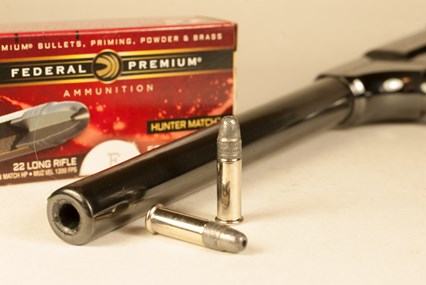
A 40-gr. solid nose LR bullet usually goes all the way through grouse, squirrels and rabbits. Some of the bigger blue grouse I’ve shot with this load, though, flew off before they died. Hollow point 36-gr. bullets expand somewhat, even at pistol-velocity, and kill the birds quicker. 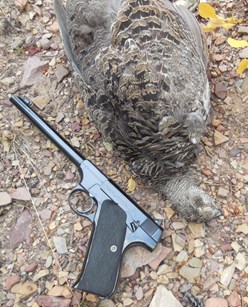
Many .22 LR handguns make a good companion. A great companion rimfire is a Ruger Mark IV 22/45 Lite with a 4.4” barrel. Its polymer grip frame keeps weight at a feathery 25 oz. My Colt Woodsman (right) should probably be considered a collector’s handgun. But I prefer to let it collect grouse, not dust. The Woodsman and a box of cartridges weigh about 2 lbs. and over the seasons the Colt has returned many times that weight in camp meat.
Revolvers are the king of versatility. Revolvers dependably cycle center-fire cartridges shooting bullets fast or slow. No minimum amount of force is required to work the action because thumbing back the hammer handles that.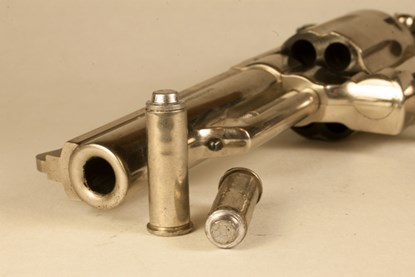
My Smith & Wesson Model 19 .357 Mag. with a 4” barrel is handy to carry. For small-game I load .38 Spl. cases with 150-gr. cast lead alloy wadcutter or semi-wadcutter bullets at 650 fps with a light charge of Unique or Red Dot powder. At that mild speed the bullets just poke a hole through game. 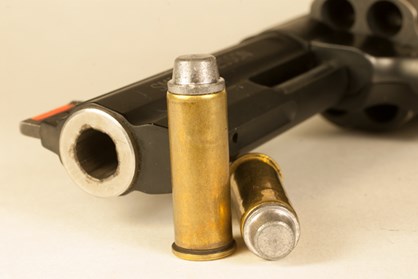

One September 1 was hunting into mountain goat country. A couple of blue grouse sat perched on a log along the trail. I shot one bird from about 20 yards with the .38 wadcutter bullet. It flopped off the log and never moved. The trail crossed a creek farther up the canyon I dressed the grouse and rinsed it in the cold water. The bullet had left a neat hole, with no blood shot meat. The grouse meat was a welcome addition to my ramen noodles that evening.
There are lots of lightweight .38 Spl. and .357 Mag. revolvers. However, nearly all revolvers chambered for larger cartridges weigh on the heavy side. My Ruger Super Blackhawk .44 Mag. is fairly compact with its 5.5” barrel. Yet its nearly 3 lb. weight on my belt makes my pants sag. Even carried in a shoulder holster the .44 weighs me down after a morning’s hike.
At the opposite is a Smith & Wesson Model 329PD .44 Mag. I bought several years ago. The revolver is built on S&W’s large N-frame, yet weighs only a feather over 1.5 lbs. with a 4.125” barrel. Its light weight comes from its scandium alloy frame and titanium cylinder. In comparison, a S&W Model 29 with the same length barrel weighs nearly twice as much. The 329PD is so light in a shoulder holster I never notice it, until I need it.
Everyone who handles the 329 immediately comment it must have a nasty recoil. That depends on what load is fired. Recoil shooting magnum loads with 270- and 300-gr. bullets isn’t all that noticeable, because after three or four shots my hand goes numb. Jacketed 240-gr. bullets come out of the revolver’s barrel at nearly 1,200 fps with 23.0 grains of Lil’Gun propellant. Their recoil is certainly evident, but manageable for six shots.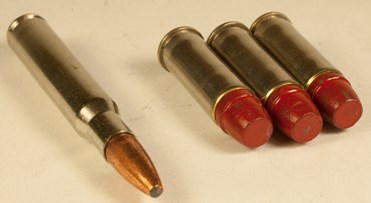
Some who hunt in bear country carry such stout loads in their handguns as a last-ditch defense against bears. A couple friends recently discussed that matter and one asked, “Why would I drop my perfectly good rifle to reach for a handgun?” A .30-06 shooting 180-gr. bullets at 2,700 f.p.s carries three times the energy at the muzzle as a 240-gr. bullet fired at 1,300 fps from a .44 magnum. Unless a hunter is a superb shot and cool under pressure, he’s better off carrying a can of bear spray as that final defense. With bear spray, all you have to do is aim at the bear and hold down the trigger. That ‘all you have to do” does require fortified nerves.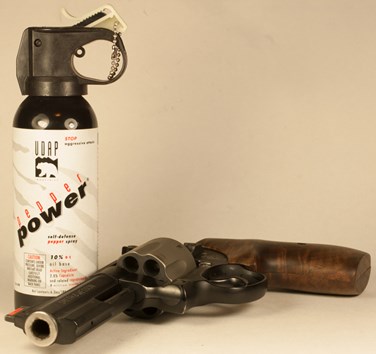
A more serviceable, and easy-recoiling, load for the .44 is a cast lead alloy 200-gr. bullet fired at a slow 800 fps From my 329, Rim Rock (rimrockbullets.com) cast 200-grain RNFP bullets have a muzzle velocity of 841 fps fired with 6.5 grains of Trail Boss propellant. As a bonus, the Rim Rock bullets hits the same place at 25 yds. at that velocity and fired at 1,244 fps with 12.5 grs. of Unique.
A properly loaded rimfire or center-fire handgun is certainly worth its burden on the hip of a big-game hunter. That handgun will provide more than its weight worth of small-game for the camp pot, all without dragging down your pants.














